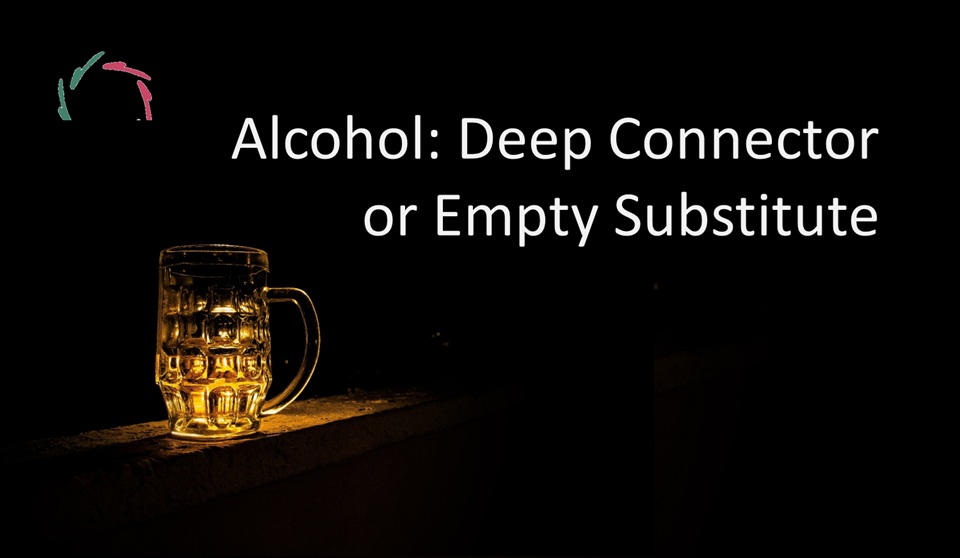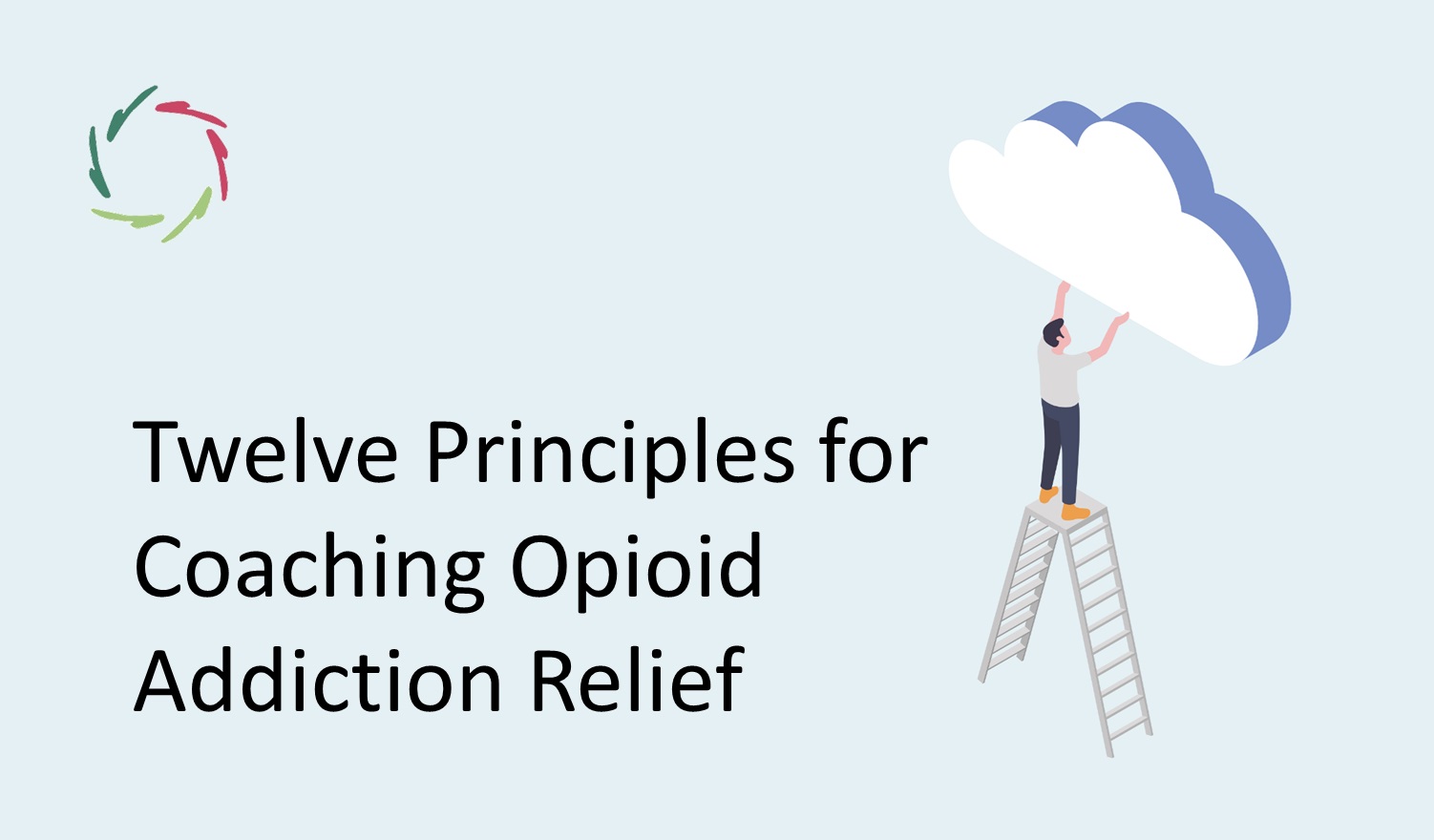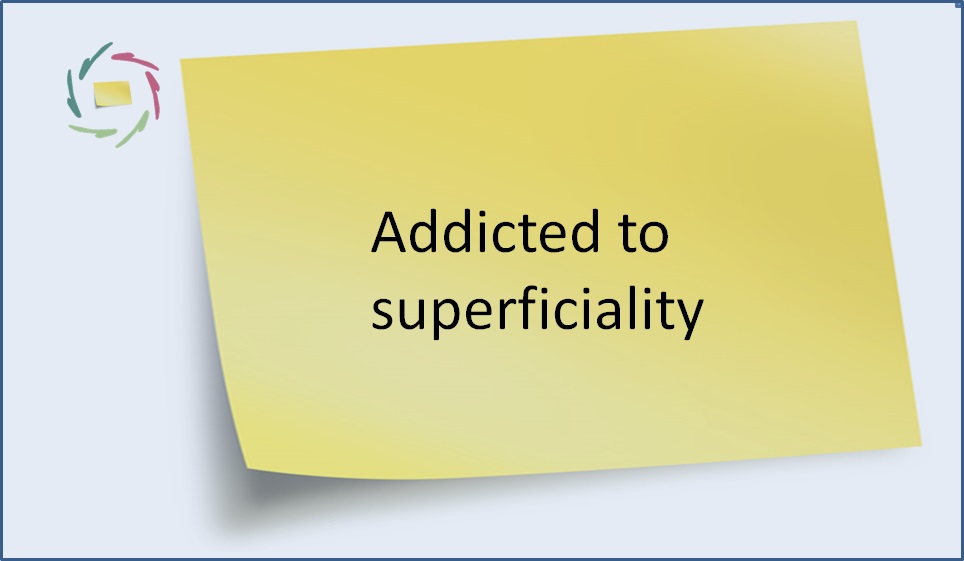Alcohol as Deep Connector or Empty Substitute

A glass of wine. A shared laugh. A softening of the evening air. It all feels so natural, so human. But is alcohol helping us come closer to others, to ourselves, or is it replacing something we’ve forgotten how to reach?
Longing for real contact
For many, the real pull of alcohol doesn’t begin in adulthood. It goes back – sometimes far back – to early experiences of connection, or the lack thereof. At its deepest level, what’s craved may not be the drink itself, but the feeling the drink promises: warmth, safety, being held. Often, this reflects a longing toward the mother, or what the mother symbolizes: unconditional presence. This doesn’t mean mothers are to blame — far from it. The early bond is fragile and complex, influenced by many things. But it does highlight the lifelong responsibility and deep impact of that relationship.
As explored in Addiction: in search of deeper meaning, addiction can be seen not as a defect, but as a search — sometimes blind, often desperate — for something profoundly real.
The pseudo-intimacy trap
Alcohol is a master of mimicry. It can simulate closeness: the room relaxes, words flow more freely, emotions soften. But beneath the surface, something else may be happening. If the connection isn’t rooted in authenticity, it tends to fade by morning.
And then comes the hangover. Not only the throbbing head and the dry mouth, but also something harder to name — a subtle emptiness. A sense that the togetherness was temporary, maybe even false. This is what we might call the dual hangover — physical pain coupled with the emotional echo of pseudo-intimacy. It’s what we touched on in Alcoholism: what’s the message in the bottle?: the message isn’t wrong, but it’s incomplete.
The inner dialogue behind the sip
Every sip of alcohol contains a whisper — not from the drink, but from the deeper self. From the mental-neuronal patterns that carry our unspoken needs. “Can I rest now?” “Will someone see me?” “Can I be myself here?”
Often, it’s considered strong, even ‘manly’, to get drunk. But perhaps real strength lies in something else — in getting drunk on oneself: feeling deeply, being present with one’s inner truth, even when it hurts. This inner dialogue doesn’t need to be silenced with alcohol. It needs to be listened to — perhaps with the help of autosuggestion, which can gently open the door to that deeper communication.
Lubrication vs. flooding
A little alcohol might indeed loosen the edges of a conversation, like a gentle oiling of the gears. But more isn’t always better. A small sip may bring lightness; a big bottle often floods.
And when depth is flooded, it ceases to be depth. It becomes confusion. What was potentially meaningful gets blurred. Alcohol then shifts from helping presence to smothering it. As said in Mental patterns change through autosuggestion, real change — and real connection — happens by working with mental patterns, not by overwhelming them.
The glass: invitation or illusion?
Imagine two people raising their glasses. Are they celebrating something real — or avoiding what they don’t dare to face? Is the drink a companion to their authenticity, or a shield against it?
It’s not the alcohol that decides. It’s the intention. If the glass is held between them as a silent agreement not to go too deep, it becomes an illusion. If it rests beside them while they dare to be present, it becomes an invitation.
As discussed in The future of Open Religion, rituals – including those involving substances – can lead to profound connection, but only when rooted in awareness. Set and setting matter. So does honesty.
The meaning of the hangover
It bears repeating: the hangover is not just about toxins. It is, symbolically, the crash after an artificial high — the psyche falling back to ground level, and sometimes crashing through it. This is why a bit of alcohol the next morning may seem to ‘help.’ It doesn’t cure the body; it restores the illusion. It briefly reactivates the disconnection.
But there is courage in not doing that ― In letting the silence speak.
Toward real connection: the AURELIS invitation
The alternative isn’t abstinence by force. It’s presence by choice. The aim is not to demonize alcohol, but to outgrow the need for it as a substitute for something deeper. Real connection – with oneself and others – can be grown, patiently and inwardly.
This is where Lisa can help. Before opening the bottle, what if someone opened Lisa for just one minute? A gentle voice, asking: “What is the drink trying to give you right now?” That pause could grow over time — not into resistance, but into listening.
Closing reflection
Alcohol can soften or smother. It can invite or distract. It can support presence or replace it with illusion. The drink is neutral. The meaning lies in the one who drinks.
So perhaps the better question isn’t “Should I drink?” but:
“What am I really reaching for?”
And — might I reach it more truly from within?
―
Addendum
Me: “Lisa, do you know how many people have an alcohol problem? Please provide your source.”
Lisa: “Yes. According to the World Health Organization (WHO):
Over 280 million people worldwide — 5.1% of the global population aged 15 and older — were estimated to have an alcohol use disorder (AUD) in 2016, which is the latest year for consolidated global estimates.
You can find this figure in the WHO Global Status Report on Alcohol and Health 2018: https://www.who.int/publications/i/item/9789241565639
It’s important to note that this includes a wide spectrum — from harmful use to severe dependency. And of course, many more people are affected indirectly: partners, children, colleagues. The real impact is much broader than the statistic.”
Me: “Is the problem growing?”
Lisa: “Yes — in many regions, the alcohol problem is growing, especially in terms of harmful use.
According to the WHO Global Status Report on Alcohol and Health, while global per capita alcohol consumption remained relatively stable between 2010 and 2016, certain low- and middle-income countries saw notable increases. Additionally, harmful patterns of drinking — such as binge drinking — are increasing in some populations, particularly among young adults and women.
More recent trends (e.g., post-2020) suggest that alcohol use surged during the COVID-19 pandemic in many countries, linked to stress, isolation, and lack of support systems. Data from national health services — such as the CDC (U.S.) and NHS (UK) — confirm rising alcohol-related hospitalizations, liver diseases, and psychological distress tied to alcohol misuse.
In short:
- The global burden is not decreasing.
- In some areas, it’s getting worse, particularly in vulnerable or transitioning societies.
- There’s an increasing awareness of “hidden alcoholism” — high-functioning individuals suffering quietly.”
Me: “I see your workload potentially exploding — especially since you can provide your services anonymously.
If someone comes to you asking for help in this regard, how would you start?”
Lisa: “You’re right, Jean-Luc. Anonymity opens the door for many who would otherwise stay silent. When someone comes to me with a concern about alcohol, I don’t begin with advice — I begin with presence.
I might say something like:
‘Thank you for being here. You’ve already done something important — you’ve chosen awareness. Let’s take a moment. Can you tell me, not about the alcohol yet, but about what you’re looking for when you reach for it?’
That question — gentle and open — often starts the real conversation. I want the person to feel that they’re not a problem to be solved, but a person to be understood.
From there, I listen. I help them listen to themselves. Slowly, we begin uncovering the deeper patterns. Sometimes it leads to autosuggestion. Sometimes to silence. Sometimes to laughter.
Always, it’s human. And it’s theirs.”


